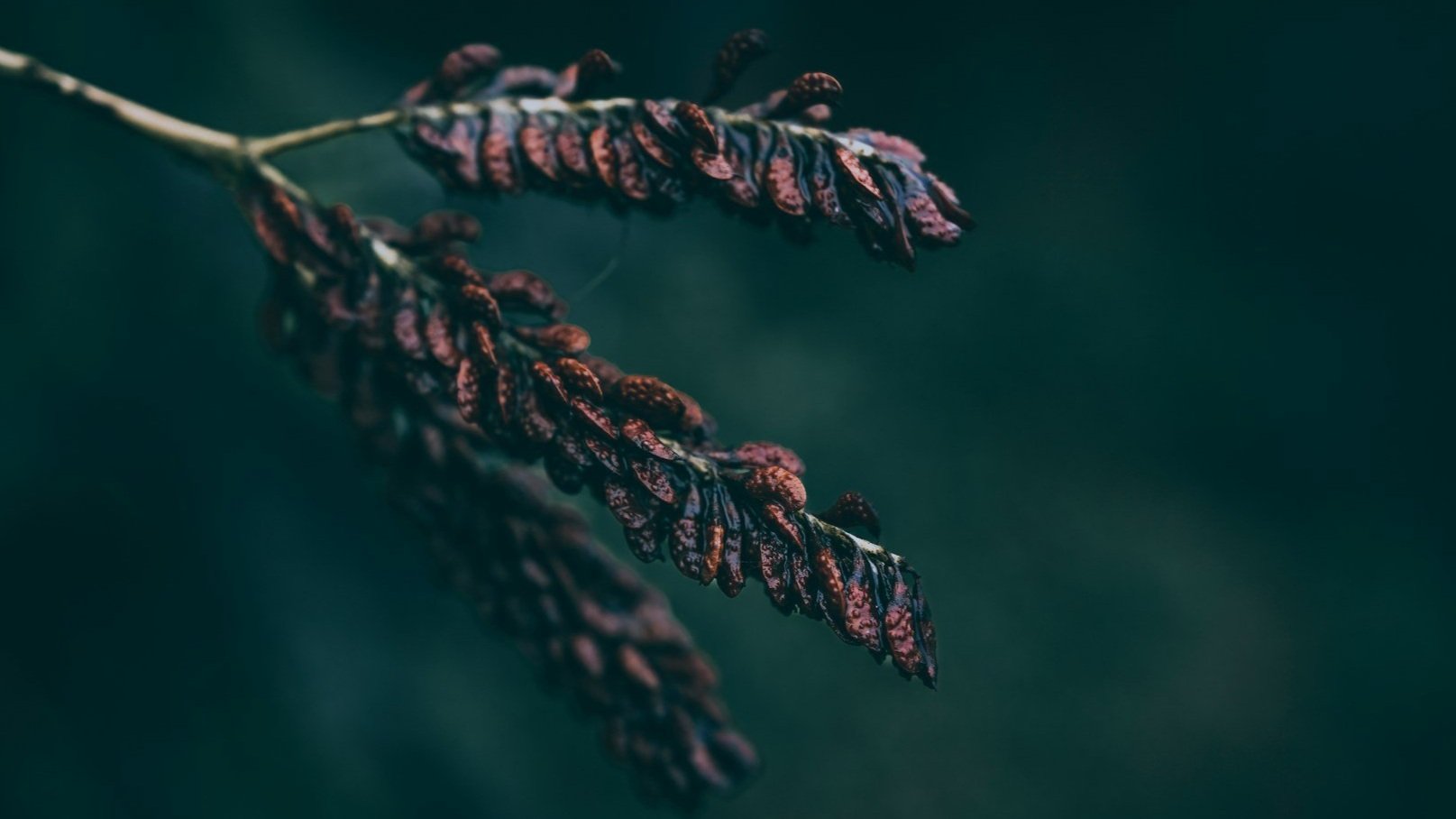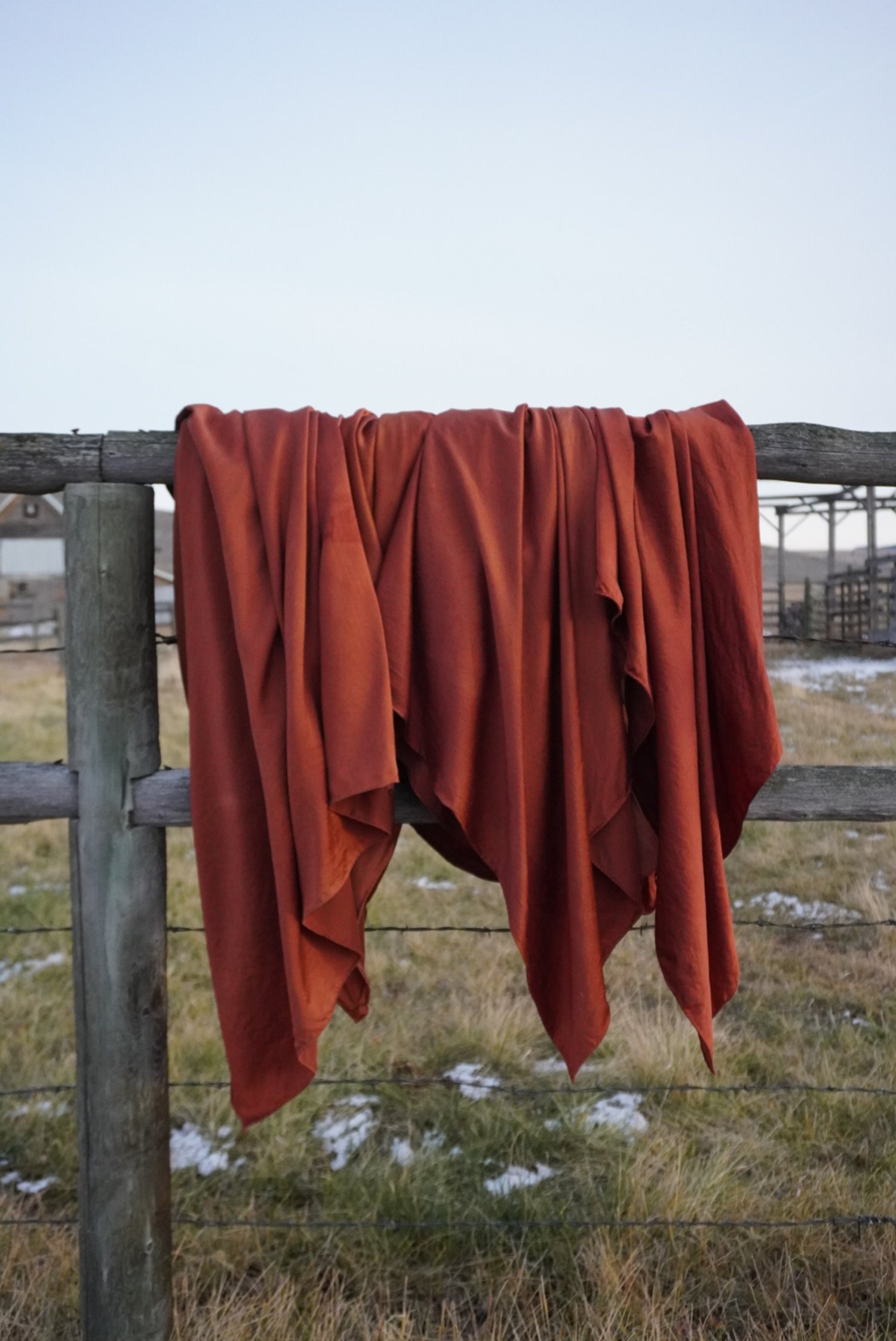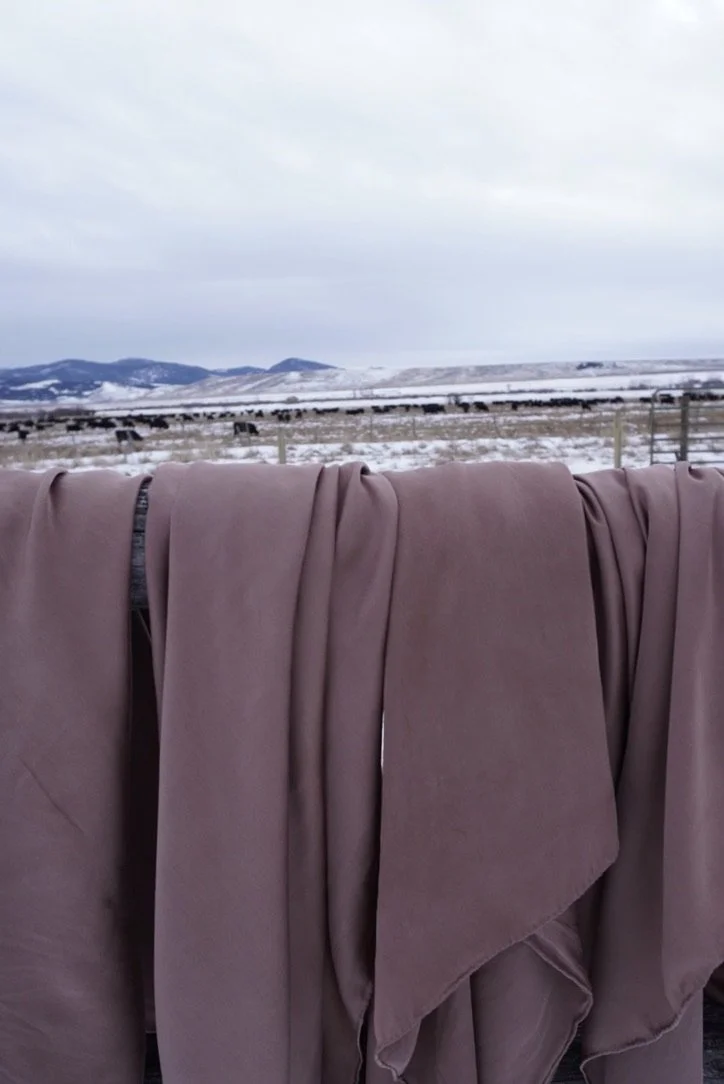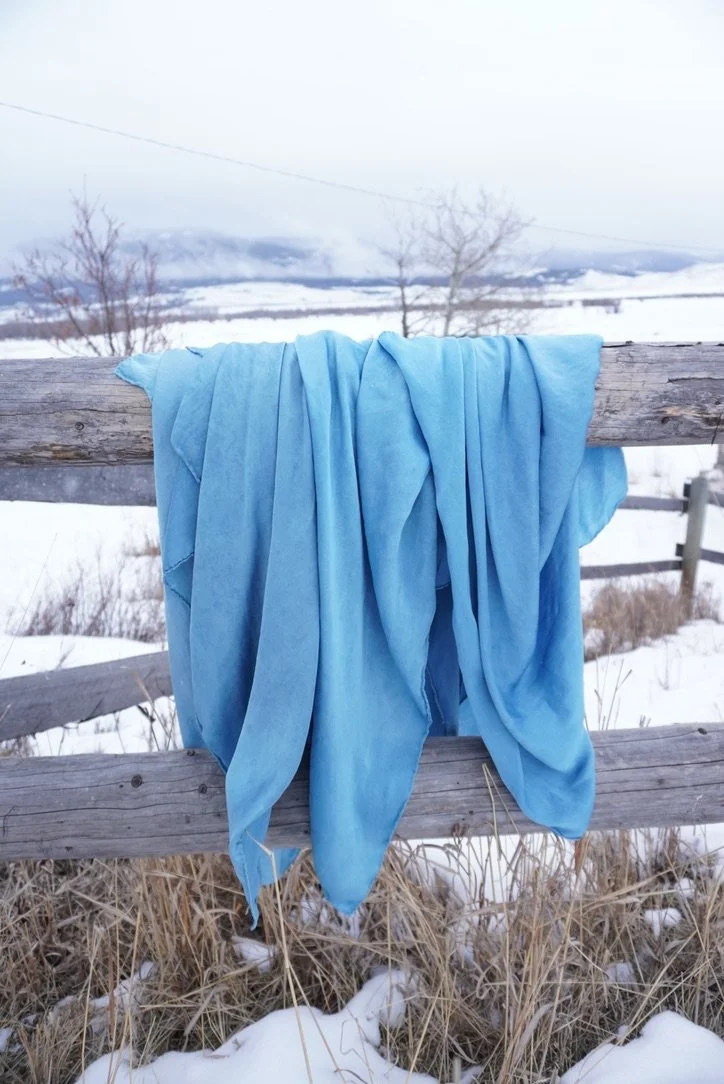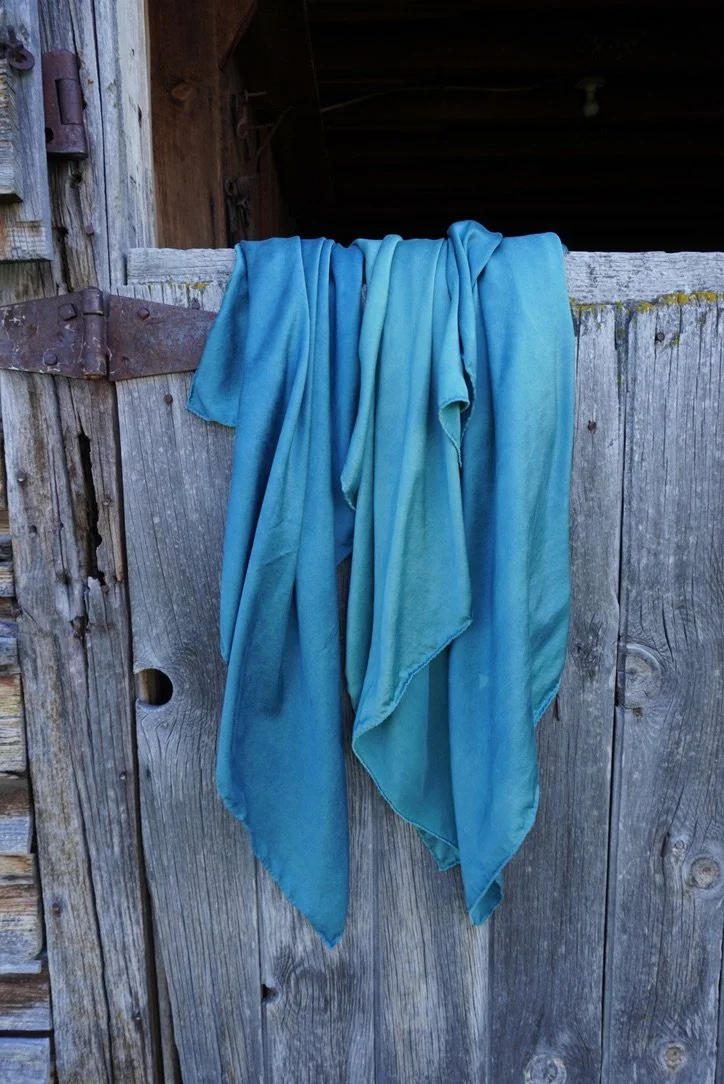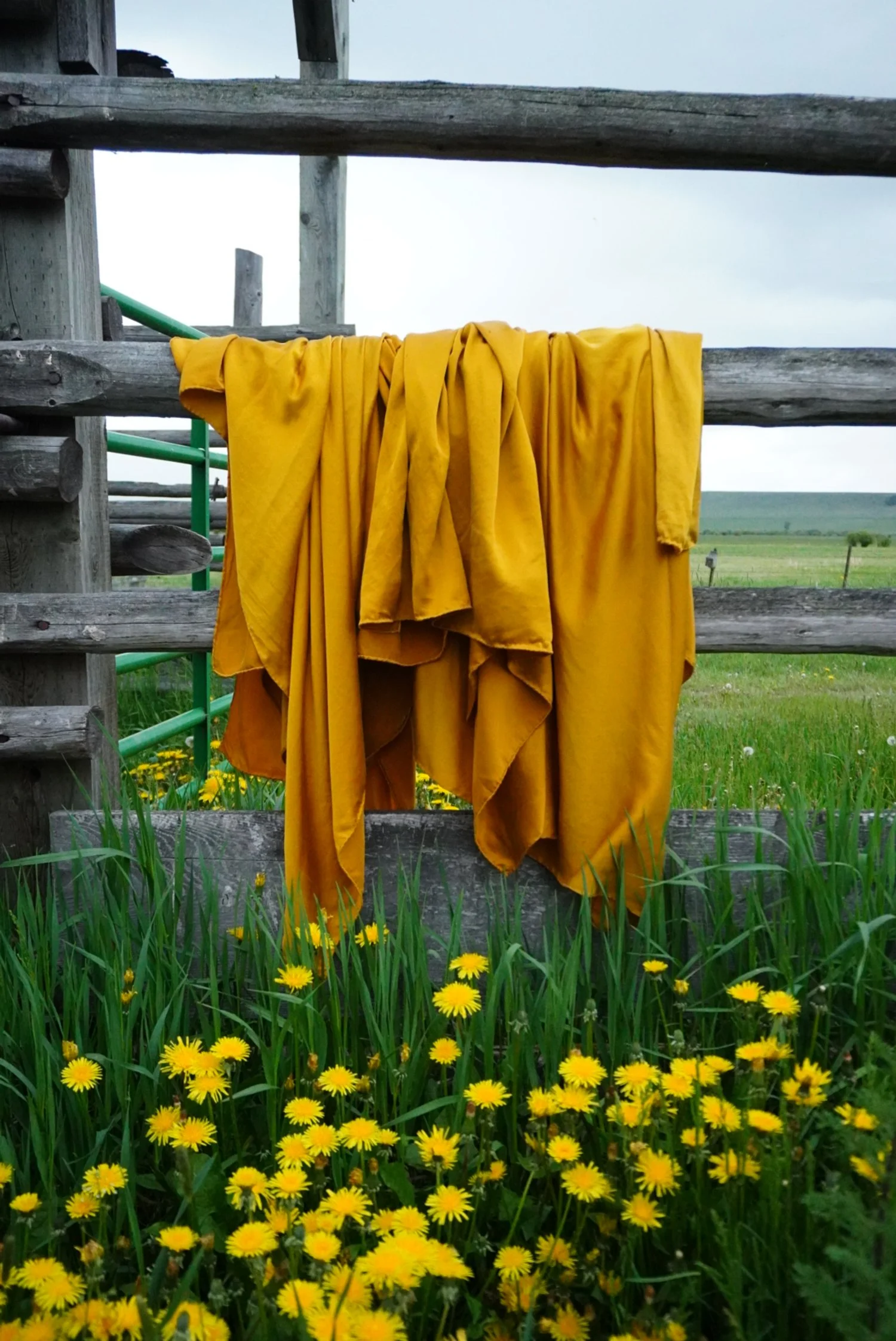the dye process
The alchemy of natural dyes is a lesson in chemistry, patience and creativity. The formula for coaxing vibrant, lasting colors from plants and insects is a combination of minerals, proteins, and particular compounds for each plant.
some of the natural dyes i use
redwood
hollyhock
sunflower
cochineal
marigold
cosmos
onion
madder
chestnut
walnut
indigo
cutch
avocado
weld
lac
the process
Each dye plant can produce an array of hues, depending on the minerals used to bond it to the fiber, the pH of the water in the dye bath, or in some cases, the temperature or duration of the dye bath. The process differs when dyeing protein fibers, such as wool or silk, versus cellulose fibers, such as linen, cotton, or hemp.
In general, most dye processes take up to two days. Each step takes a few hours to warm to the correct temperature and simmer for at least an hour. The rags then remain in the dye pot for 12-24 hours and after a cold water rinse, cure for two weeks in a dark room before being ready for their final wash.
sourcing
Sourcing the highest quality materials and dyes is very important to me.
Silk was first discovered in China around 3600 BC and remained a Chinese trade secret for thousands of years before spreading to other Asian regions. The most prolific silk is produced by a silkworm who relies solely on the mulberry tree for food. I work directly with a company in the historic silk road region of northern China to source my silk.
While I have been extremely happy with our relationship and the quality of silk from them, global supply chains are a bit complex and I wish I knew more about the specific production of my silks before they arrive in Montana. Someday I hope to journey to China and visit the mulberry groves for myself!
While some of my dyes are grown in my home garden, I cannot keep up the quantity needed to dye all of the wild rags I am making for you! Additionally, there are some dye plants that have no interest in growing in a Northern Rockies montane valley. These dyes I source from other producers and suppliers.
While I source from several places, many of my dyes come from a mother-daughter company in Canada. They have been instrumental in the renaissance of natural dyes in modern times and work directly with producers globally to source all of their dyes and materials. I feel confident in their commitment to fair trade and sustainability.
SHOP
